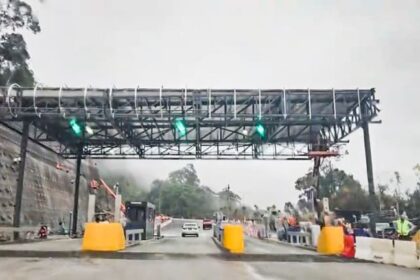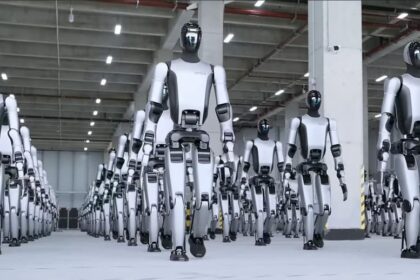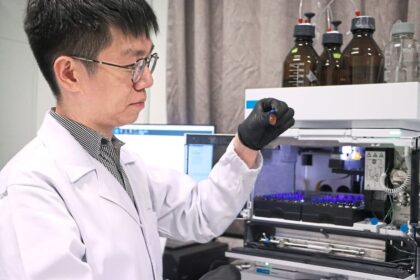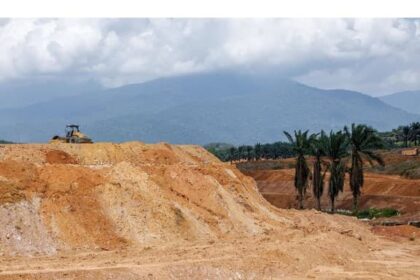China’s Breakthrough: Turning Moon Dust Into Building Blocks
In a leap that could redefine the future of space exploration and off-Earth living, Chinese scientists have unveiled a solar-powered machine capable of transforming lunar soil into robust construction bricks. Developed at the Deep Space Exploration Laboratory (DSEL) in Hefei, this innovation marks a pivotal step toward building sustainable infrastructure on the Moon—using nothing but sunlight and the Moon’s own resources. The device, which operates much like a 3D printer, harnesses concentrated solar energy to melt lunar regolith (the Moon’s dusty soil) into dense, durable bricks. This approach could dramatically reduce the cost and complexity of constructing lunar bases, eliminating the need to haul heavy building materials from Earth.
- China’s Breakthrough: Turning Moon Dust Into Building Blocks
- How Does the Lunar Brick Machine Work?
- Why Build With Lunar Regolith?
- From Prototypes to Lunar Cities: Testing and Future Plans
- China’s Broader Lunar Ambitions
- Global Context: The Race for Lunar Construction
- Beyond the Moon: Toward Sustainable Space Colonization
- In Summary
How Does the Lunar Brick Machine Work?
The heart of this technology lies in its ingenious use of solar energy. The system employs a large parabolic reflector—a curved mirror that captures and focuses sunlight. This concentrated light is then transmitted through fiber optic bundles, intensifying the energy more than 3,000 times compared to normal sunlight on Earth. At the focal point, temperatures soar above 1,300°C (2,372°F), hot enough to melt lunar regolith.
Once melted, the regolith is shaped into bricks using a 3D printing process. The machine’s design is elegantly simple yet highly effective: it requires no water, chemical binders, or additives—just lunar soil and sunlight. The result is a dense, strong brick suitable for constructing roads, landing pads, equipment platforms, and, crucially, protective shells for lunar habitats.
Overcoming Technical Hurdles
The two-year development journey was not without challenges. Lunar soil varies in composition depending on location, so the DSEL team created multiple simulated regolith samples to ensure the machine could handle the Moon’s natural diversity. Efficiently transmitting and focusing solar energy was another major hurdle, requiring precision engineering in both the reflector and fiber optic systems. Extensive laboratory testing with simulated lunar soil and artificial sunlight confirmed the process could reliably produce bricks with the necessary strength and durability.
Why Build With Lunar Regolith?
Transporting construction materials from Earth to the Moon is prohibitively expensive and logistically complex. Every kilogram launched into space adds significant cost and risk. By using in-situ resource utilization (ISRU)—a strategy that leverages local materials—space agencies can dramatically reduce mission expenses and increase the feasibility of long-term lunar settlements.
Lunar regolith, the fine, powdery soil covering the Moon’s surface, is abundant and, when melted, can be shaped into solid structures. The Chinese machine’s ability to use regolith without any additives or imported materials is a major breakthrough in ISRU technology.
From Prototypes to Lunar Cities: Testing and Future Plans
Before deploying the technology on the Moon, Chinese scientists are rigorously testing the bricks’ performance in space. In November 2024, simulated lunar bricks were delivered to China’s Tiangong space station aboard the Tianzhou-8 cargo spacecraft. Astronauts will expose these bricks to the harsh conditions of space—extreme temperature swings, radiation, and microgravity—to assess their mechanical strength, thermal resistance, and radiation shielding capabilities.
These tests are crucial for validating the bricks’ suitability for lunar construction. If successful, the next phase will involve integrating the brick-making machine with robotic construction systems, enabling automated, large-scale assembly of lunar infrastructure. The vision is ambitious: fleets of robots mass-producing and assembling bricks to build roads, landing pads, and protective shells for habitat modules—laying the groundwork for permanent lunar bases and, eventually, entire lunar cities.
Limitations and Engineering Solutions
While the bricks are dense and robust, they cannot maintain internal atmospheric pressure in the Moon’s vacuum and low gravity. Instead, they are intended to serve as protective outer layers for pressurized habitats made from rigid or inflatable modules. This layered approach offers several advantages:
- Radiation Shielding: The bricks provide critical protection against harmful cosmic rays and solar radiation.
- Micrometeorite Defense: The dense outer shell helps shield habitats from high-speed micrometeorite impacts.
- Thermal Insulation: The bricks help moderate the extreme temperature swings on the lunar surface, which can range from -173°C at night to 127°C during the day.
China’s Broader Lunar Ambitions
The lunar brick machine is just one part of China’s expansive plan for lunar exploration and settlement. The DSEL, a national research hub co-founded by the China National Space Administration (CNSA), the Anhui provincial government, and the University of Science and Technology of China, is at the forefront of deep space technology development. Their focus extends beyond brick-making to include energy capture, water extraction, and infrastructure planning for both lunar and Mars missions.
China’s International Lunar Research Station (ILRS) project exemplifies these ambitions. Planned in two phases, the ILRS aims to establish a basic research facility at the lunar south pole by 2035, with an expanded model projected for the 2040s. As of April 2025, 17 countries and more than 50 international research institutions have joined the ILRS initiative, reflecting growing global interest in lunar exploration.
Automated Construction and Robotic Integration
Central to China’s vision is the use of automated robots for lunar construction. The brick-making machine is designed to work in tandem with robotic systems that can mass-produce, transport, and assemble bricks into modular structures. This approach minimizes the need for human labor in the Moon’s hazardous environment and enables rapid, scalable construction.
Yang Honglun, a senior engineer on the project, outlined the broader vision:
“Our goal is to create a fully automated construction process on the lunar surface, where robots manufacture and assemble building modules using only local resources and solar energy. This will enable a permanent human presence on the Moon.”
Global Context: The Race for Lunar Construction
China is not alone in pursuing lunar construction technologies. The United States, through NASA’s Artemis program, is also developing methods to use lunar regolith for building habitats and infrastructure. However, China’s rapid progress and successful demonstration of a solar-powered, additive manufacturing system have positioned it as a leader in the field.
Other Chinese research teams have explored alternative approaches, such as using binders to hold regolith together or sintering lunar soil into bricks with robotic masons. Some have even proposed using natural lunar tunnels (lava tubes) as shelters. These diverse efforts underscore the strategic importance of ISRU and the intense international competition to establish a foothold on the Moon.
Implications for Space Policy and Exploration
Establishing a permanent presence on the Moon is not just a technological challenge—it also has geopolitical and scientific implications. The first country to build a sustainable lunar base could set important precedents for resource use, governance, and international cooperation in space. As more nations and organizations join lunar projects, the Moon is becoming a new frontier for both collaboration and competition.
Beyond the Moon: Toward Sustainable Space Colonization
The principles behind China’s lunar brick machine could extend far beyond the Moon. The same solar-powered, in-situ manufacturing techniques could be adapted for Mars and other celestial bodies, where transporting materials from Earth would be even more costly. By leveraging local resources and renewable energy, future space missions could achieve greater self-sufficiency, paving the way for sustainable colonization of the solar system.
Moreover, the technologies developed for lunar construction—such as high-temperature solar concentration, automated 3D printing, and robotic assembly—have potential applications on Earth, particularly in remote or resource-scarce environments.
In Summary
- Chinese scientists have developed a solar-powered machine that turns lunar soil into strong construction bricks, using only sunlight and local resources.
- The technology relies on a parabolic reflector and fiber optics to concentrate solar energy, melting regolith at over 1,300°C and shaping it via 3D printing.
- Bricks produced are dense and robust, ideal for roads, platforms, and protective shells for lunar habitats, but cannot maintain internal pressure alone.
- Simulated bricks are being tested on China’s Tiangong space station to assess their durability and suitability for lunar conditions.
- The innovation is part of China’s broader plan to build automated, robotically assembled lunar infrastructure, supporting permanent human presence on the Moon.
- China’s progress in in-situ resource utilization (ISRU) positions it as a leader in the global race for lunar construction, with implications for future Mars missions and sustainable space colonization.












